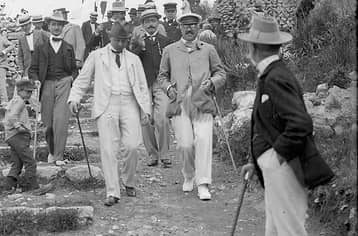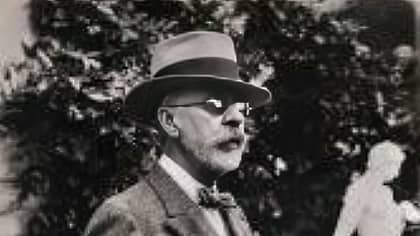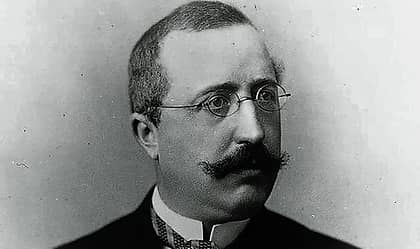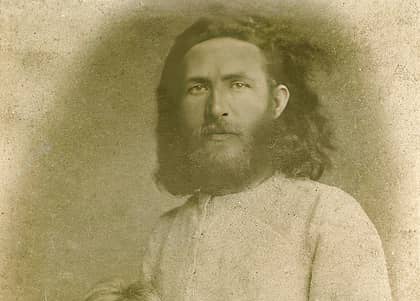- Home
- Experiences
- Capri's Most Famous Residents
Capri's Most Famous Residents





During the 19th century, the island of Capri became one of the most sought-after destinations for artists and travelers undertaking the Grand Tour. Hotel Pagano, the island's first hotel, gained worldwide fame thanks to its meticulously conserved guest books listing visitors that included royalty, philosophers and French composers. Capri's surge in popularity as a port of call for prominent personalities helped transform it into a fashionable destination and peaceful Mediterranean retreat, which it remains even today. The island has attracted people from across the globe who chose to stay for days or even years, establishing it as an international cultural hotbed.
Axel Munthe
Axel Munthe

Axel Munthe was a well-traveled writer and physician who first visited Capri while on a journey to improve his health. He was so enamored by the island that he decided to build a home there. Munthe made frequent trips to Capri in between his professional activities, and he built his home, Villa San Michele, out of an old chapel in Anacapri. Inside his home he kept various antiquities and fossils that he had found on the island. These artifacts have made Villa San Michele one of Capri's main tourist attractions. Munthe also volunteered to help those affected by cholera epidemics in Naples and earthquakes in Messina. Despite later suffering from a severe eye disease that eventually left him blind, he wrote "The History of San Michele", detailing his construction of the house in Anacapri. The Villa now belongs to the Swedish state.
Friedrich Alfred Krupp
Friedrich Alfred Krupp

Friedrich Alfred Krupp was a wealthy German industrialist often referred to as the "Munitions King". He had a passion for marine biology and regularly stayed at the Grand Hotel Quisisana in Capri. Krupp owned land near the Charterhouse of San Giacomo that he had transformed into the Gardens of Augustus, a public park with spectacular views. He also collaborated with the Naples Stazione Zoologica marine biology research institution, exploring the seas around Capri with his own boat, Puritain. In 1902 he oversaw the construction of Via Krupp, an engineer-designed coastal path from the Gardens of Augustus to Marina Piccola. Soon after, however, he was expelled from Italy due to accusations of homosexuality. He died shortly after in an apparent suicide.
Karl Wilheim Diefenbach
Karl Wilheim Diefenbach

Karl Wilheim Diefenbach was a painter born in 1851 who came to Capri in the early 20th century to escape attacks by the press. Inspired by the island's stunning scenery, he created many large works using unusual materials and techniques. He followed the principles of Theosophy, kept his hair long, and wore a white robe even during winter. His work has been displayed in the Charterhouse of San Giacomo since 1975.
Norman Douglas
Norman Douglas

George Norman Douglas visited Capri in 1888 to capture blue lizards and returned multiple times, eventually buying a house in Naples. He moved to the island later and wrote many works, including monographs on its flora and fauna. He began writing his most successful novel, South Wind, in London in 1917 during World War I, and completed it in Capri with encouragement from Faith Mackenzie, a fellow British author who lived on Capri from 1913 to 1920. After World War II, Douglas returned to the island to live in a home on Via Tragara until his death there in 1952. He is buried at the Cimitero Acattolico non-Catholic cemetery on Capri.
Alberto Moravia
Alberto Moravia

Italian novelist Alberto Moravia lived on the island of Capri for many years, starting in the early 1930s when he and his wife Elsa Morante hosted French author André Gide in their house overlooking the sea. After leaving Rome in 1935, he spent a lot of time on the island to escape the war. Moravia wrote some of his most famous books, such as The Conformist and The Roman, while living on Capri. During this time, Moravia realized that the inspiring views provided by Capri's landscape were second to none. He often used a small rowing boat to visit the Faraglioni sea stacks, along with his dear friend the Italian author Antonio Spadaro, who was married to the daughter of German novelist Thomas Mann. Moravia and Spadaro were sometimes joined by Alfred Hitchcock and Humphrey Bogart, who decided to shoot some scenes from Beat the Devil on the island. Moravia stayed on Capri until the late 1960s and returned to Rome in 1967.
Jacques Fersen
Jacques Fersen

Jacques d'Adelsward-Fersen, also known as Baron Fersen, was a French novelist and notable eccentric who first visited Capri in 1897. He moved to the island in self-imposed exile after being involved in a sex scandal in 1903 in his native Paris. He lived at Villa La Certosella before building his unique Art Nouveau-style mansion, Villa Lysis, near Villa Jovis. Its majestic entrance features four Ionic columns decorated with gilded motifs, while the garden includes a small temple surrounded by myrtle and bay trees and a walking path to the beach. Baron Fersen stayed on the island for two decades, accompanied by his secretary Nino Cesarini. Fersen died of a cocaine overdose and is buried in the Cimitero Acattolico non-Catholic cemetery.
Edwin Cerio
Edwin Cerio

Italian writer Edwin Cerio is widely considered one of the most important figures in Capri’s history. The son of Italian physician Ignazio Cerio, he was an eccentric scholar with various interests. He worked abroad as a naval engineer and collaborated with Friedrich Alfred Krupp. At age 45 he returned to his hometown of Capri, and in 1920 he became mayor. He was also a talented architect and designed some of Capri's villas. During his tenure as mayor, he tried to introduce regulations to preserve the island's architectural style. Cerio is best known for his literary works, such as Capri nel Seicento, L'Ora di Capri, and Flora privata di Capri. He founded a museum and cultural center named after his father, the Centro Caprense Ignazio Cerio, which is now used to host exhibitions and conferences.
Curzio Malaparte
Curzio Malaparte

Kurt Erich Suckert is the real name of Italian writer and journalist Curzio Malaparte, who was active during the politically turbulent 1920s. Malaparte was involved in anti-fascist activities, which resulted in his five-year confinement on the island of Lipari island. He also worked for Corriere della Sera newspaper during World War II. Two of his most acclaimed works La Pelle and Kaputt were inspired by the allied forces liberation of Naples. After visiting friend Axel Munthe in 1936, he decided to build Villa Malaparte on Pizzolungo coastal path with the help of architect Adalberto Libera in 1938. His house Casa come me is one of the most striking examples of modern architecture and was used as a set by Jean Luc Goddard in 1963. Sadly, it is currently owned by Giorgio Ranchi Foundation and not open to public.
Pablo Neruda
Pablo Neruda

Chilean poet Pablo Neruda was a renowned figure in international literature who also held important diplomatic and political roles, such as his term as a senator for the Chilean Communist Party in 1945. After giving a speech in 1948 in which he publicly accused President Gabriel Gonzalez Videla of abuses, he was arrested and forced into exile. He arrived on Capri in 1953, the same year he received the Stalin Award, hosted by Edwin Cerio in Casa di Arturo on Via Tragara. During his stay, he published a collection of love poems titled The Captain's Verses. Neruda eventually won the Nobel Prize for Literature in 1971.